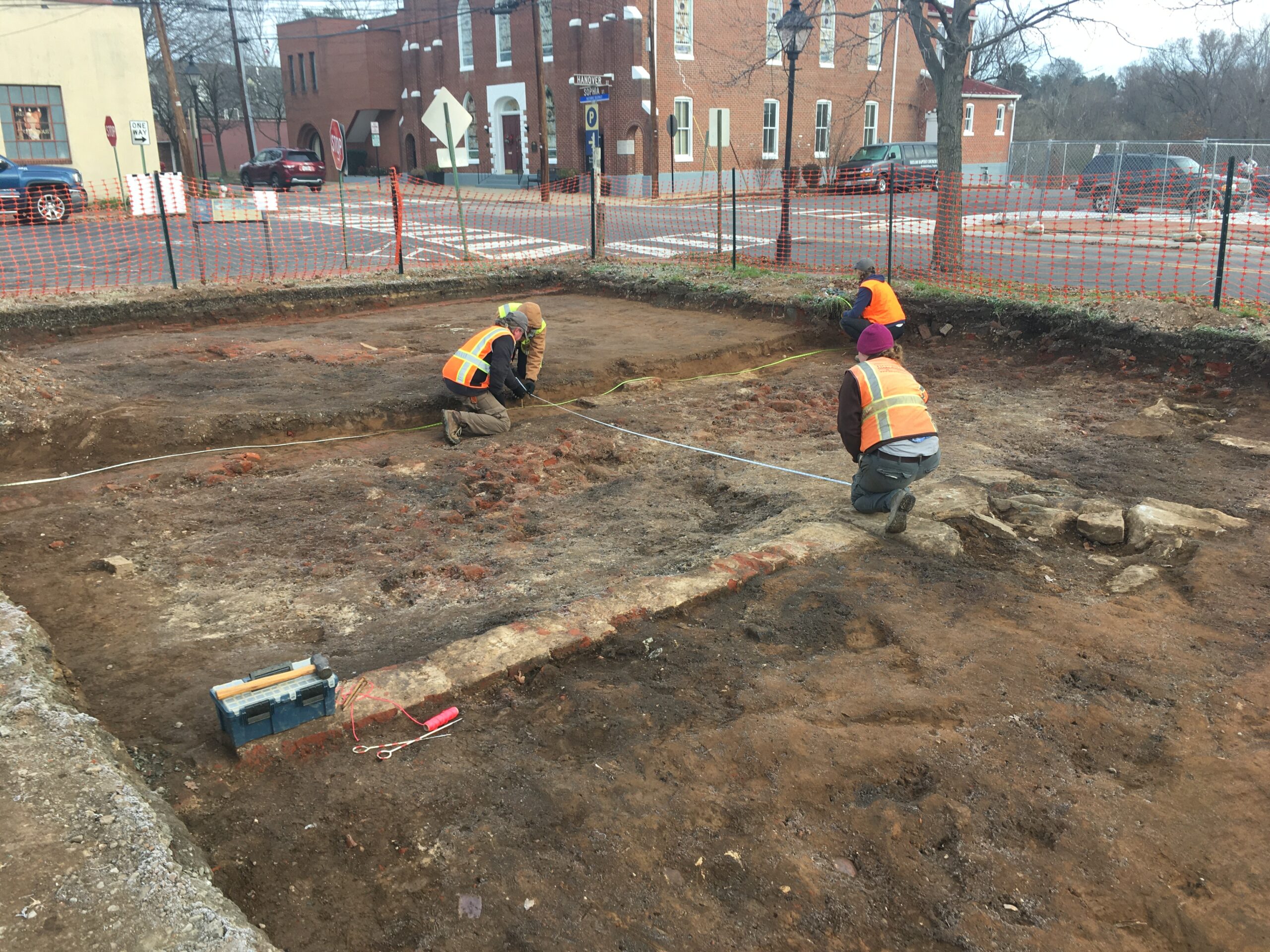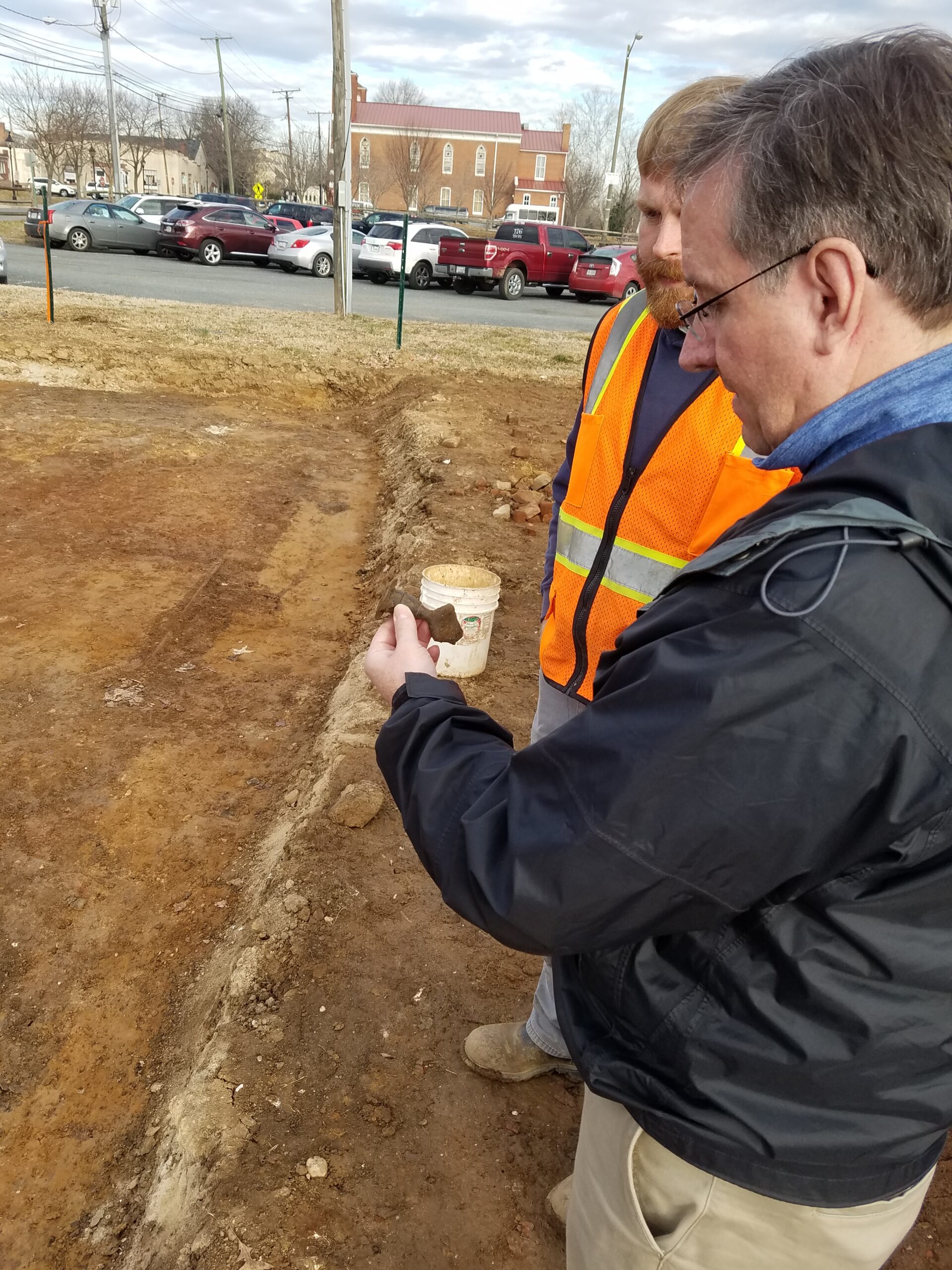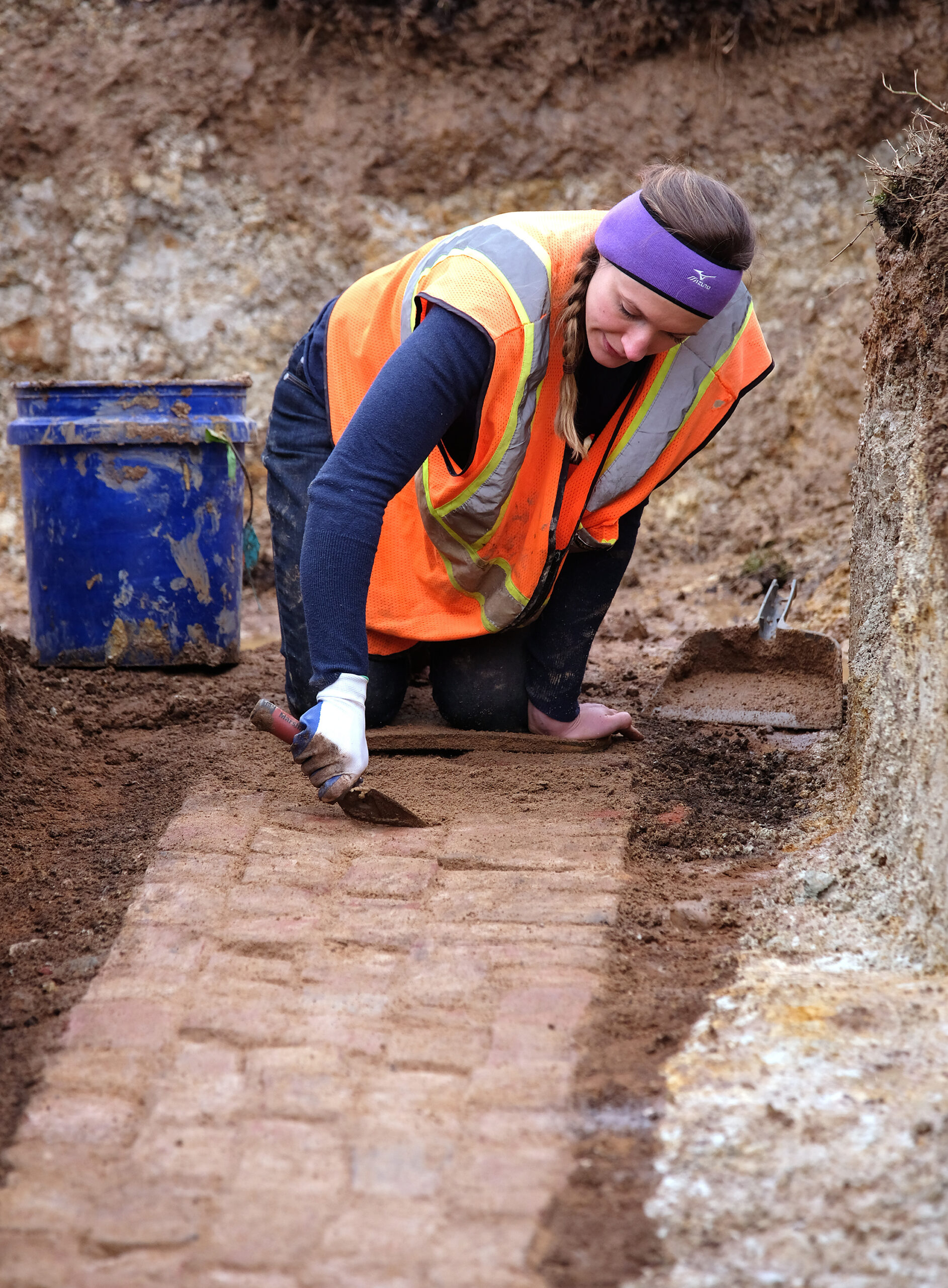By Adriana Moss
Fredericksburg has a wonderfully rich occupation spanning thousands of years. However, when it comes to historic tourism, efforts have commonly focused on the city’s prominence during the Civil War, maybe a little bit of our role in early colonial commerce, and as the home of Mary Washington, the mother of the first President of our country. Lately, with the support of our State Historic Preservation Office (the Virginia Department of Historic Resources), the focus in many localities within the Commonwealth has shifted to tell a fuller and more inclusive story than the written record tends to provide. What better way to do that than through archaeology, where we have the ability to expand our knowledge of a place and its occupants in ways that no other forms of research or study can? Enter the Fredericksburg “Archaeology Preservation District” in the Unified Development Code (City Code 72), or more commonly referred to as the Archaeological Ordinance, passed in 2021. Dovetail Cultural Resource Group (Dovetail) was selected as a City archaeological consultant shortly thereafter to help with projects completed under the new law.
For more than a decade, goals had been set forth by the City to incorporate archaeological considerations into land development projects citywide within several iterations of Comprehensive Plans and City Council Priorities. According to Kate Schwartz, the City’s Preservation Planner, the regulations and district were developed by multiple working groups, namely the archaeology working group established in 2017, that researched “best practices and sample ordinances, consult[ed] with cultural resource professionals, and conduct[ed] an evaluation of the City’s archaeological potential.” Dovetail president Kerri Barile Tambs was honored to participate in this working group. Several digs within the city, such as at the Marriott site complete in 2006, uncovered more than 300 years of layered occupational history. This site in particular included artifacts and foundations of eighteenth-century stores, the Indian Queen Tavern, and nineteenth-century servants’ quarters and alley walls. When the ordinance was drafted nearly 15 years later, it was important to the City to bring in members of the local development and building community to be a part of the conversation, according to former Councilman Matt Kelly, noting that “it is a very successful model when the people who are impacted are in the room and provided a voice.” When asked about any successes or challenges the ordinance has posed thus far for applicants, Schwartz stated that the expectations of property developers and general standards outlined in the ordinance are clear, which “has been extremely helpful in working through various review processes.” “Impacts to archaeological resources are evaluated for all applications received for certificates of appropriateness (COA), major site plans, minor site plans, and residential lot grading plans,” according to Schwartz.
“Impacts to archaeological resources are evaluated for all applications received for certificates of appropriateness (COA), major site plans, minor site plans, and residential lot grading plans,” according to Schwartz.
The ordinance was scheduled to take effect in 2020 during the COVID-19 pandemic, but was not enacted fully until FY22 (July 1, 2021–June 30, 2022). Within the first two years, 148 COAs have been reviewed; in addition, 16 major site plans, 18 minor site plans, and 248 residential lot grading plans were approved. Schwartz maintains that “Phase I [also known as reconnaissance-level] studies associated with new residences have been most common and have provided a unique opportunity for study in historic neighborhoods that are largely developed,” while other types of archaeological study have included monitoring, such as during grading activities for the new Idlewild Middle School. Up to this point, Schwartz says, “the skew toward Phase I studies over monitoring […] was not something we predicted, but it seems to be working well. If the trend continues, it may be something worth formalizing in an amendment to the code in the future. I think in general; we will need several more years of observation before we can clearly identify trends or potential modifications.” Kelly agrees with this sentiment, stating that the ordinance should be reviewed every several years to reevaluate the processes and address other areas of concerns such as general collections management of artifacts uncovered as well as their accessibility to the public and researchers.
According to Schwartz, the findings to date have been important to our body of knowledge but have not stopped planned projects. “I’m grateful for knowing we have the ability and authority to investigate and document, to some level, of essentially any development in the City. It gives us the ability to be proactive rather than reactive; and if we do need to be reactive, we have a ready structure and process that we can implement,” states Schwartz. One project in particular, a Phase I survey at 1416 Princess Anne Street, shed light on a notable Jim Crow-era African American-owned boarding house. Completed by Dovetail, the work demonstrated how “archaeology is often the tool most suited to learning about underrepresented history in our city: African American residents, immigrants, those of modest means, and others. The studies we’ve done and will continue to do give us a much more thorough picture of life in the city.” Kelly adds that “the human story is something that fascinates everybody [and] archaeology gives us that opportunity to tell so many more stories. There is a lot of stuff that we [will] find that will change the understanding of the history of the city.”

Dovetail archaeologists dig the Hieskell-White Site on Sophia Street. This development, sponsored by Tommy Mitchell, was a test case of the new ordinance (Dovetail 2020).

Dovetail Vice President and Archaeologist, Mike Carmody, Providing a Tour to Local School Group at the Marriot Site (Dovetail 2006).

Tim Duffy, current Fredericksburg City Counciler, and former Dovetail Archaeologist, Brad Hatch, Discussing Pottery Found at the Riverfront Park Excavation (Dovetail 2019).

Author Cleaning Exposed Ice House Wall at Riverfront Park Excavation (Dovetail 2019).

John Hennessy, former Chief Historian at the Fredericksburg and Spotsylvania National Military Park (left), Matt Kelly (center), and former Dovetail Archaeologist, Earl Proper, at the Marshall-Bell Kiln Site (Dovetail 2013).

